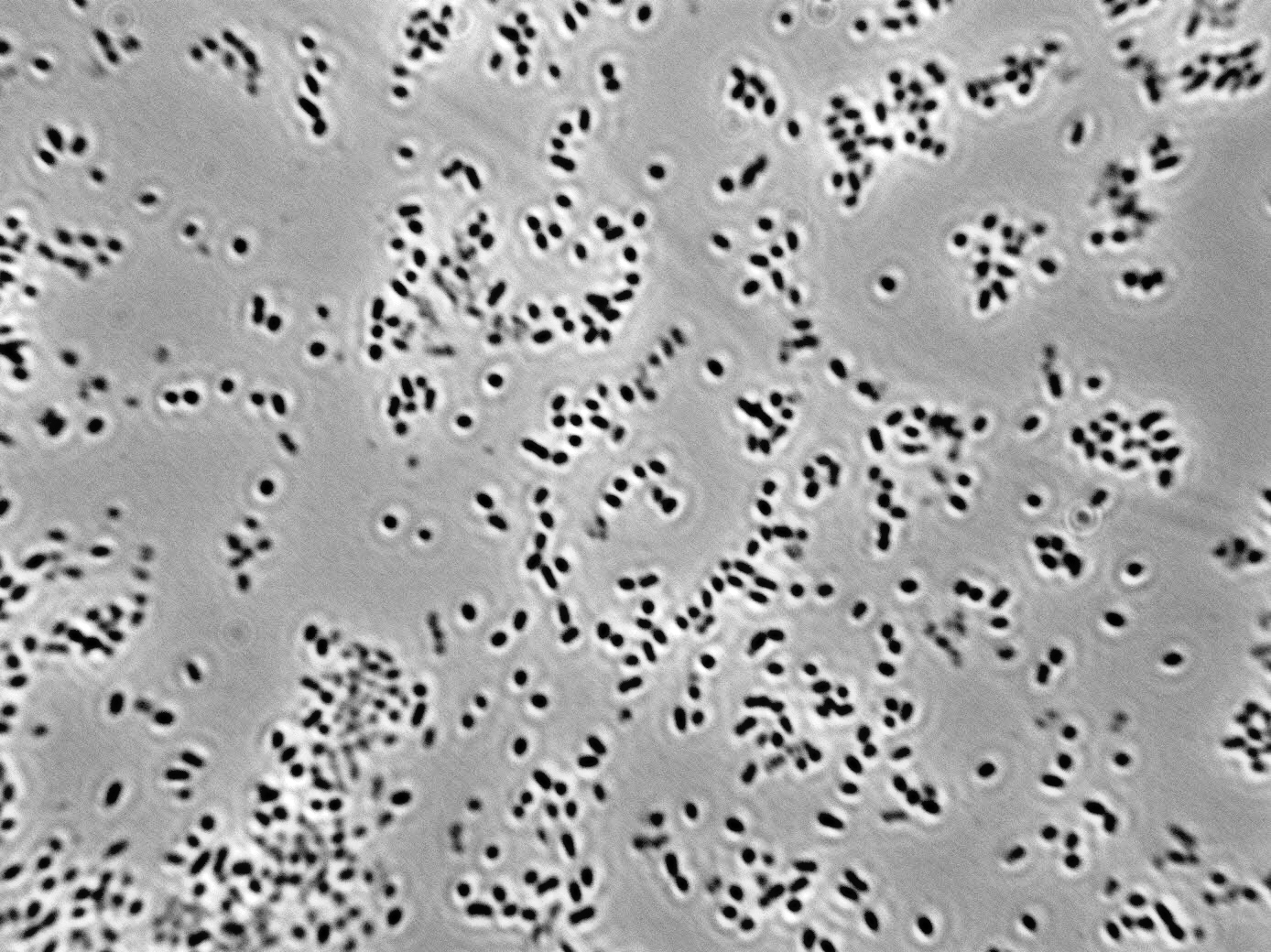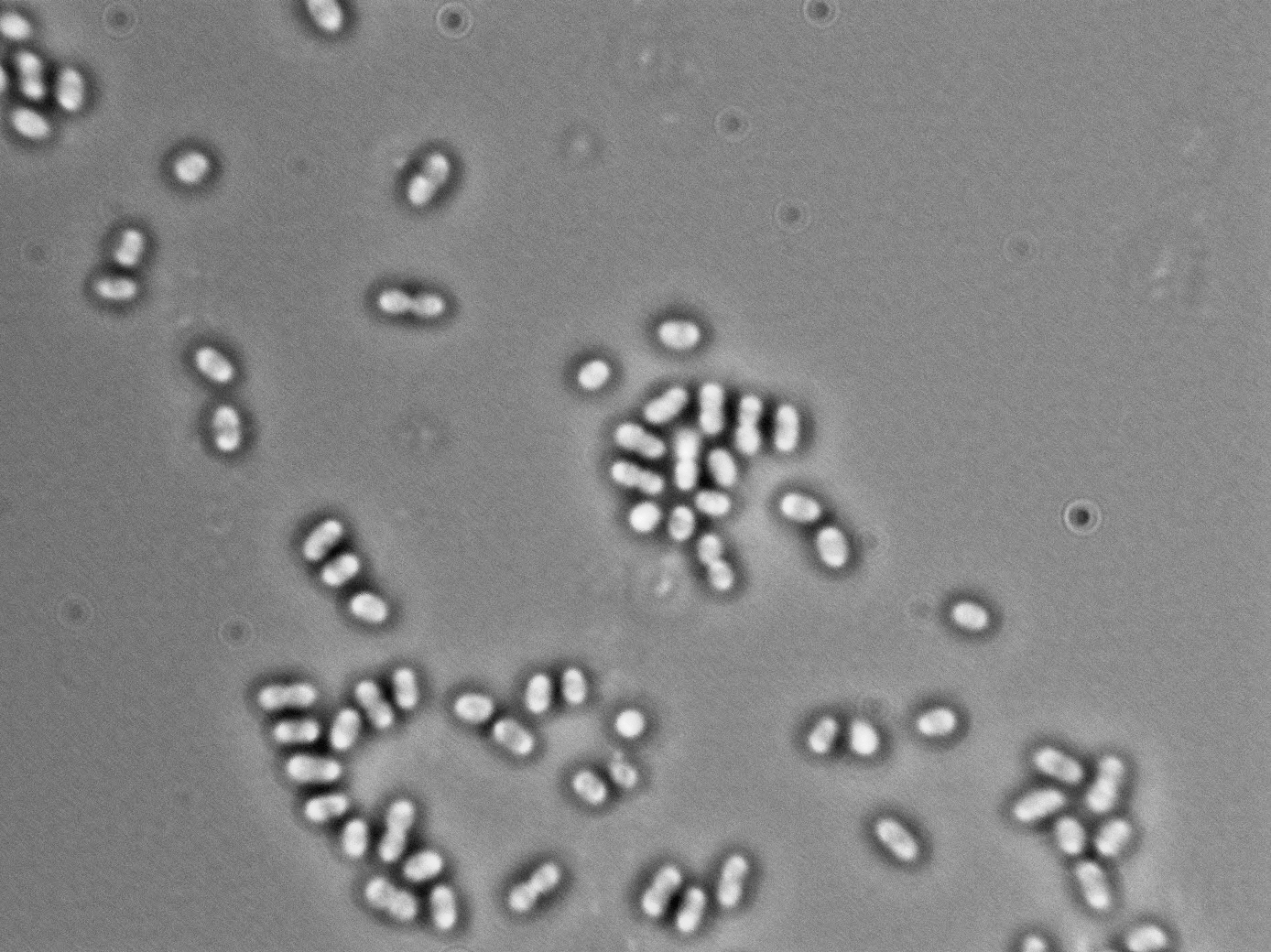Genus/species: Acetobacter pasteurianus
Gram Stain: Negative
Morphology:
- Cell: Ovoid
- Colony: Not known
- Liquid Growth: Not known
 |
 |
Physiological Traits:
Acetic Acid Bacteria (AAB) oxidize alcohol and sugars into acetic acid and the corresponding organic acid, respectively using the alcohol dehydrogenase enzyme. Acetaldehyde and ethyl acetate may also be produced. All AAB are specialized for rapid oxidation and are strict aerobes therefore oxygen availability is very important. Their growth and metabolism is markedly enhanced with the addition of oxygen to their environment. A. pasteurianus prefers to grow at pHs ranging from 5.5-6.3 and at temperatures of 25-30C. Preferred carbon sources are glucose, mannitol, and ethanol.
Ecological Traits:
In nature, the endophytic A. pasteurianus exists on sugar-rich substrates such as such as fruits, flowers, and vegetables. They are also found on naturally spoiled fruits.
Distinguishing Features:
Production of acetic acid, acetaldehyde, and ethyl acetate, which can be detected sensorily. Acid indicators such as CaCO3 or bromocresol-green may also be added to growth media to detect its presence.
Role in wine:
A. pasteurianus is responsible for the spoilage of wine. It is one of the most common organisms responsible for spoilage during storage and ageing. They arrive at the winery on grape berry surfaces and continue to persist throughout fermentation although their population numbers are lowered due to the presence of increased amounts of ethanol and lack of oxygen.
Sensitivities:
- SO2: x
- Sorbate:
- DMDC:
- pH: x
- Acids: x
- Ethanol: x
- Anaerobiosis: x
- Heat: x
References:
- H. Konig et al. Biology of Microorganisms on Grapes, in Must, and in Wine. 2009. Springer-Verlag Berlin Heidelberg.
